Abstract
In the past decade, tremendous advances in the state of the art of automatic speech recognition by machine have taken place. A reduction in the word error rate by more than a factor of 5 and an increase in recognition speeds by several orders of magnitude (brought about by a combination of faster recognition search algorithms and more powerful computers), have combined to make high-accuracy, speaker-independent, continuous speech recognition for large vocabularies possible in real time, on off-the-shelf workstations, without the aid of special hardware. These advances promise to make speech recognition technology readily available to the general public. This paper focuses on the speech recognition advances made through better speech modeling techniques, chiefly through more accurate mathematical modeling of speech sounds.
Full text
PDF
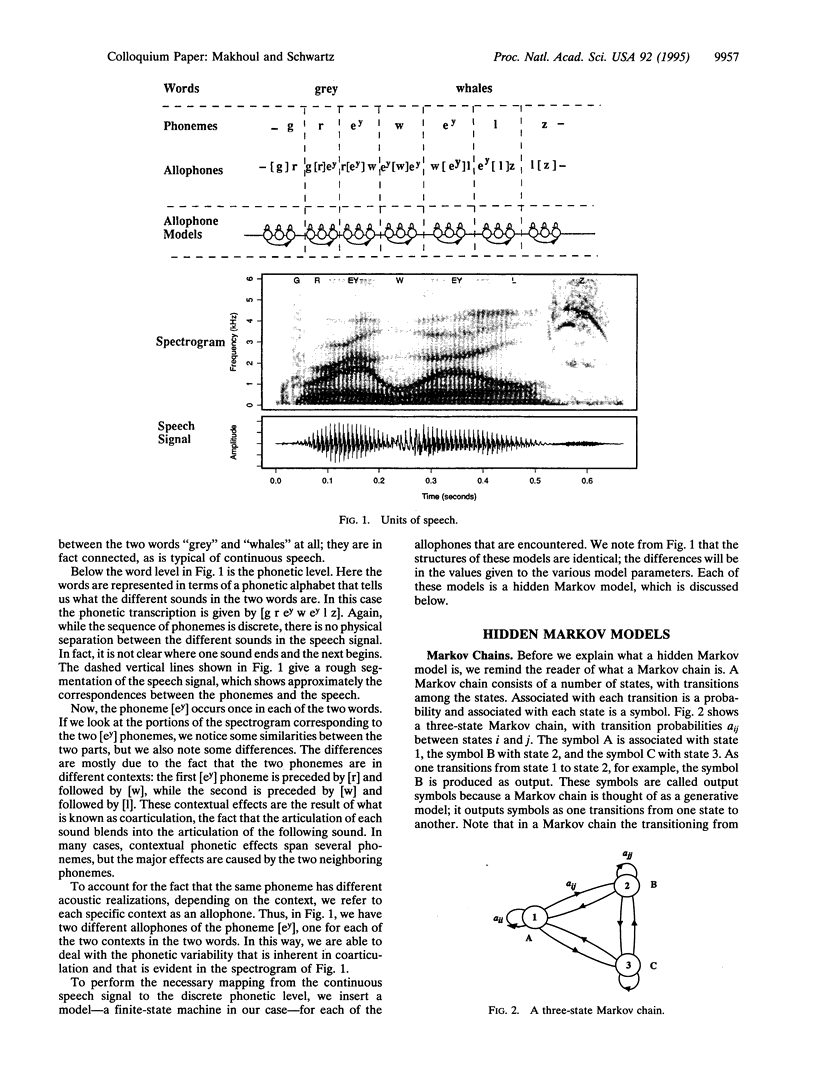
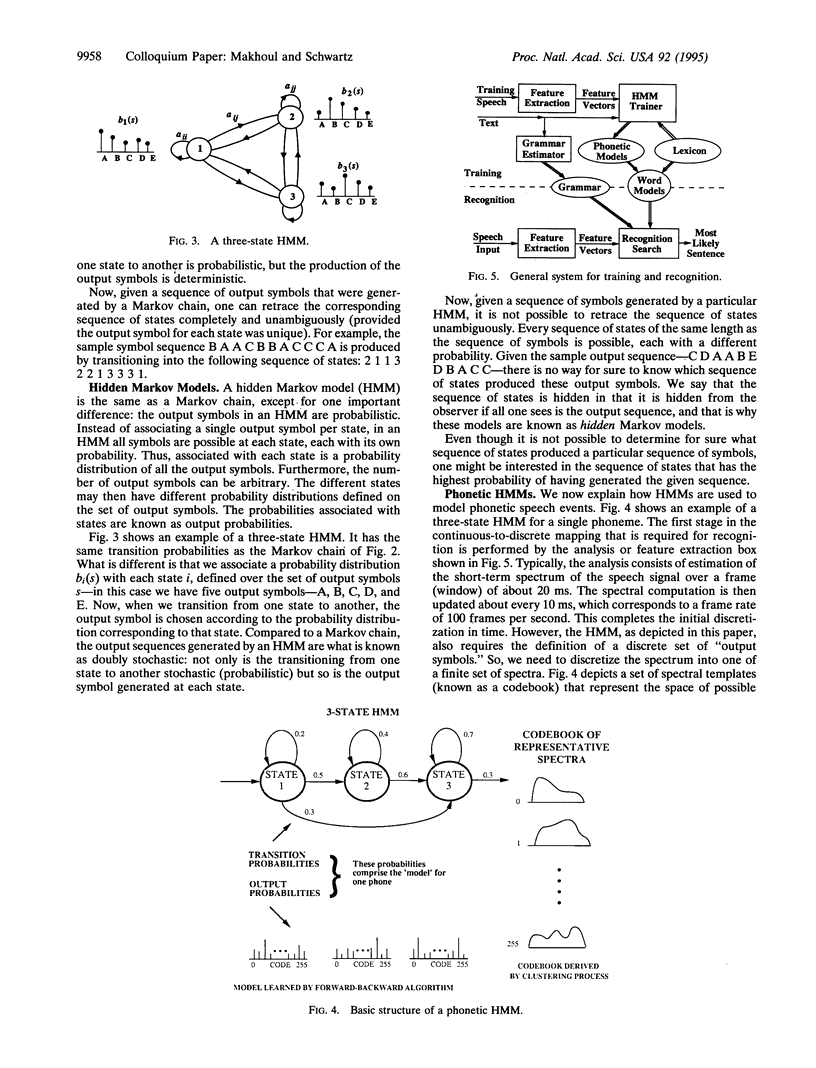
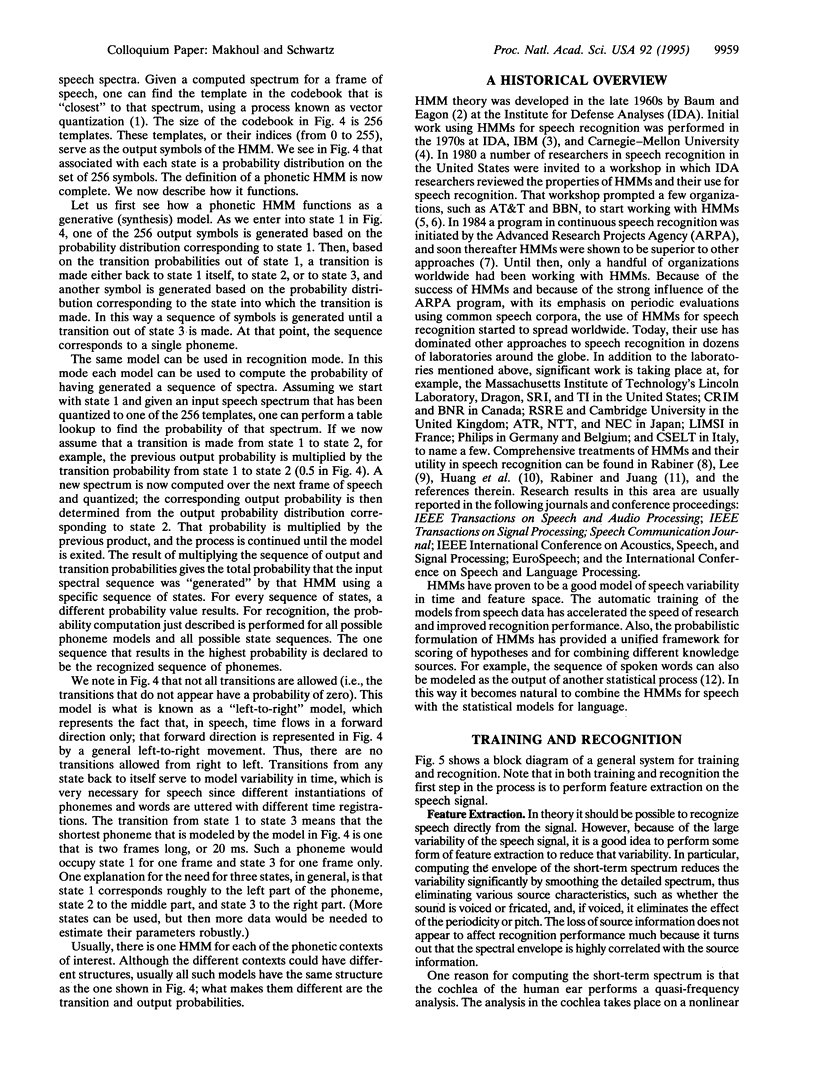
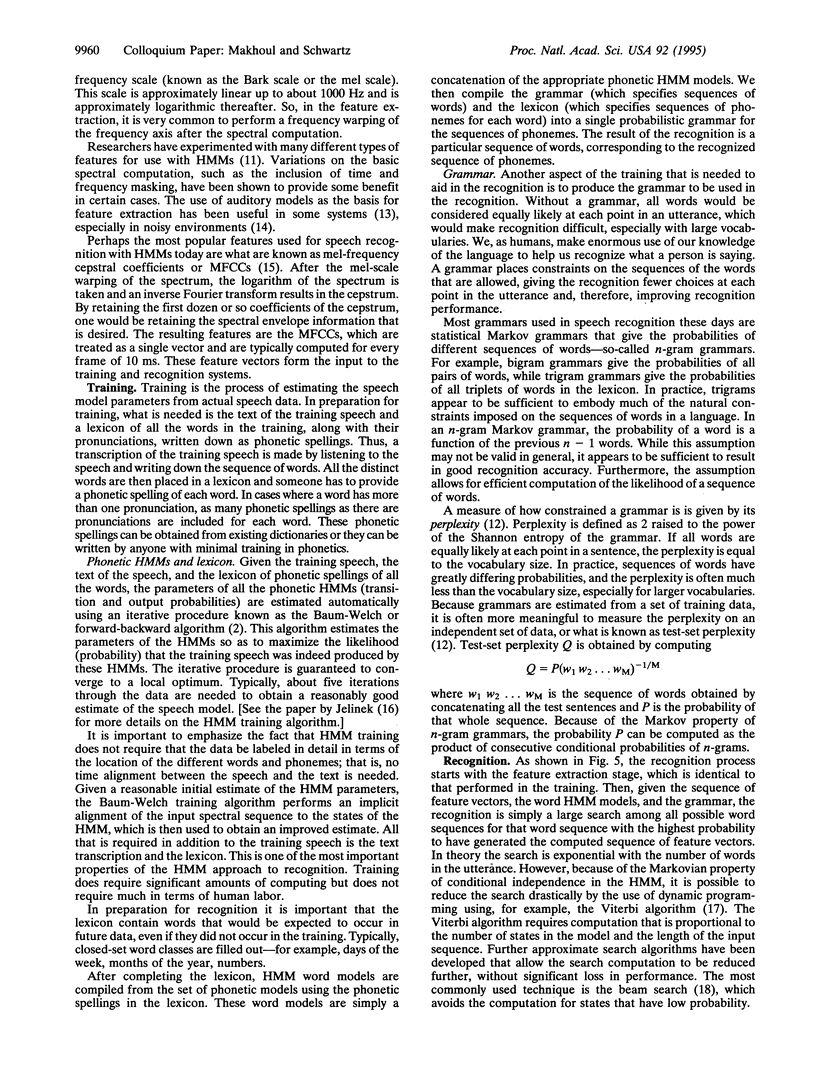
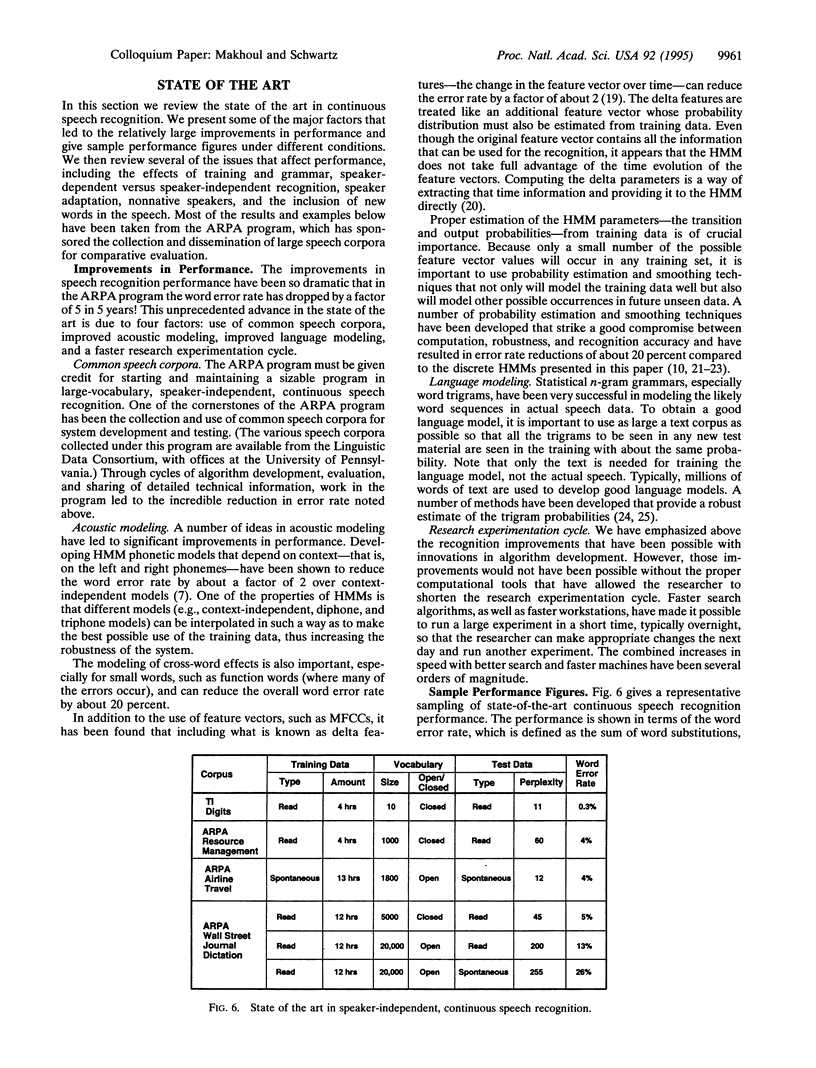
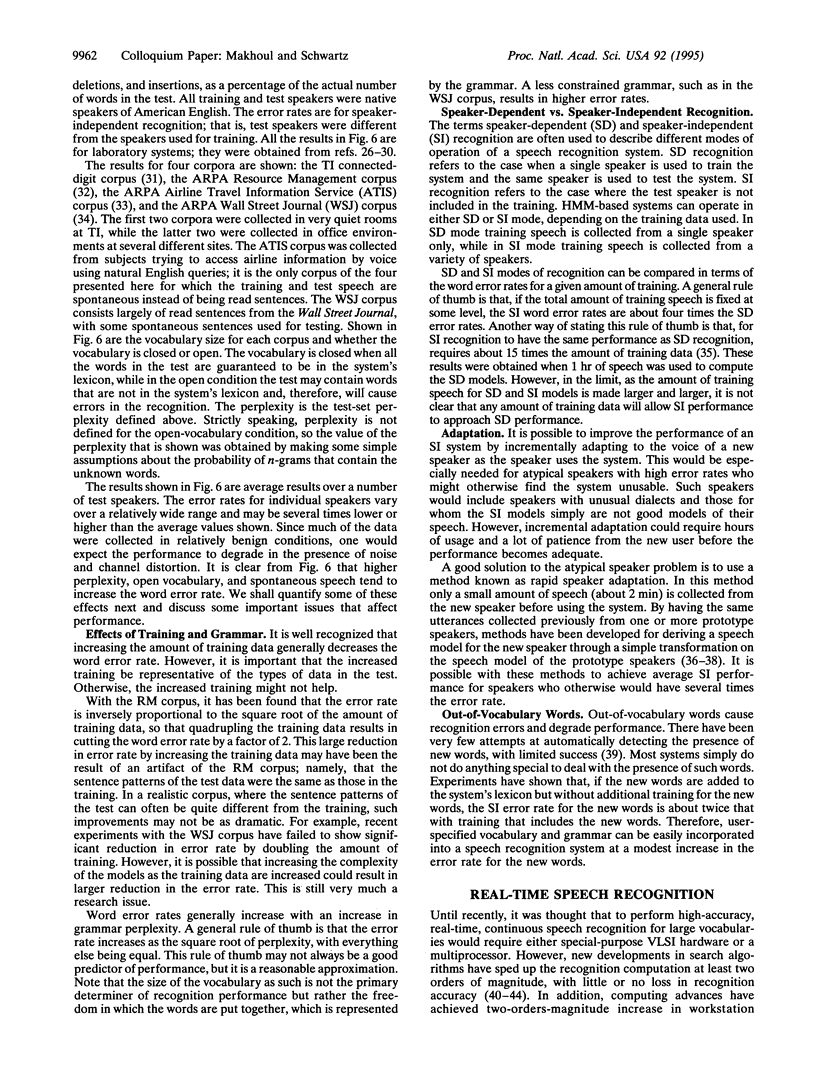
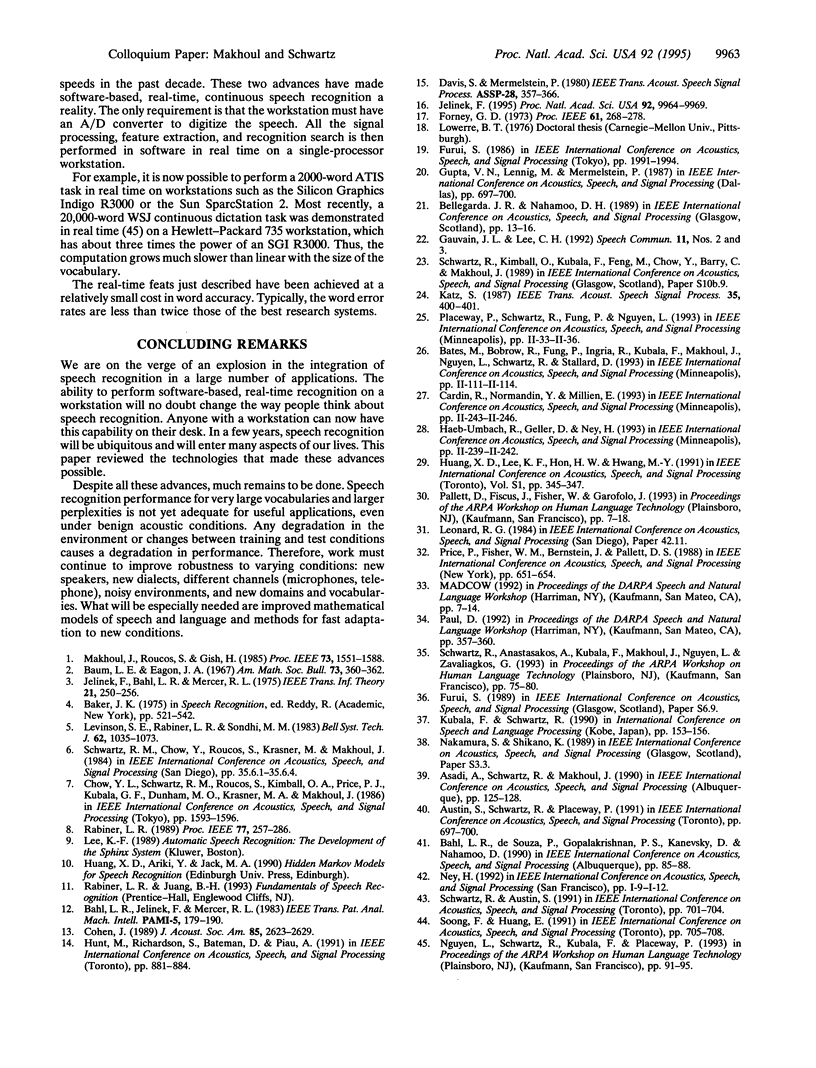
Images in this article
Selected References
These references are in PubMed. This may not be the complete list of references from this article.
- Cohen J. R. Application of an auditory model to speech recognition. J Acoust Soc Am. 1989 Jun;85(6):2623–2629. doi: 10.1121/1.397756. [DOI] [PubMed] [Google Scholar]
- FIGDOR P. P. [Uremia in oxalic acid poisoning]. Wien Med Wochenschr. 1961 Feb 11;111:111–114. [PubMed] [Google Scholar]
- Jelinek F. Training and search methods for speech recognition. Proc Natl Acad Sci U S A. 1995 Oct 24;92(22):9964–9969. doi: 10.1073/pnas.92.22.9964. [DOI] [PMC free article] [PubMed] [Google Scholar]




